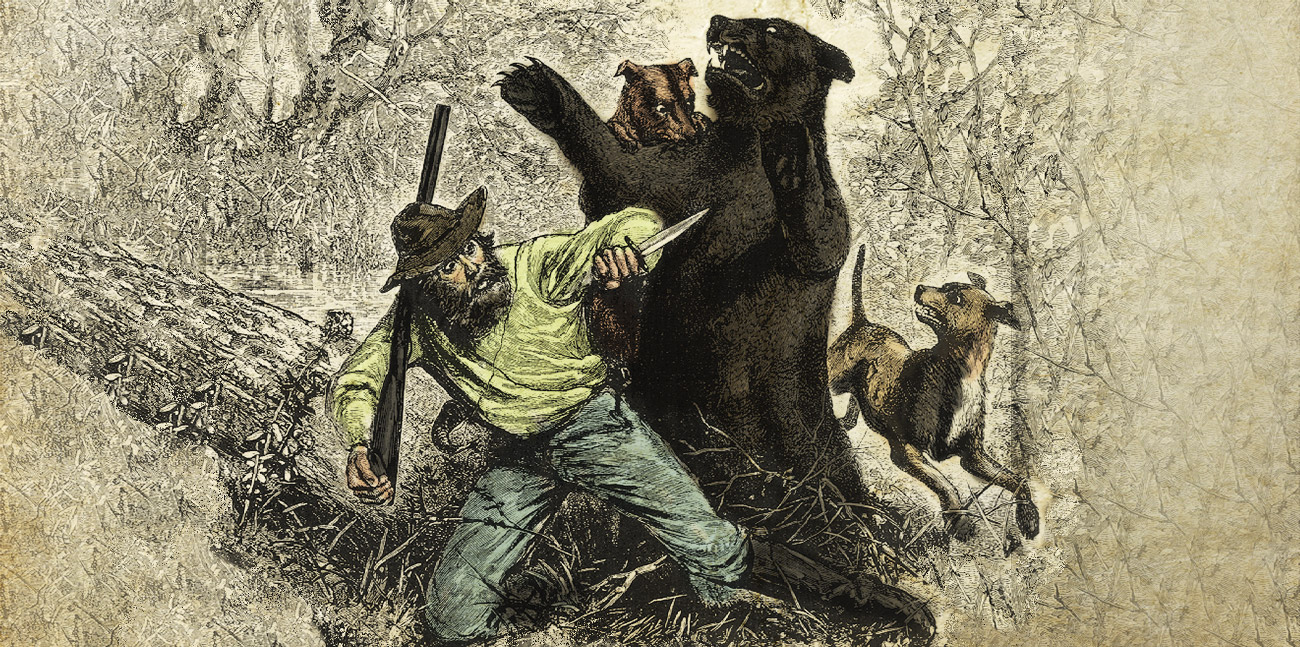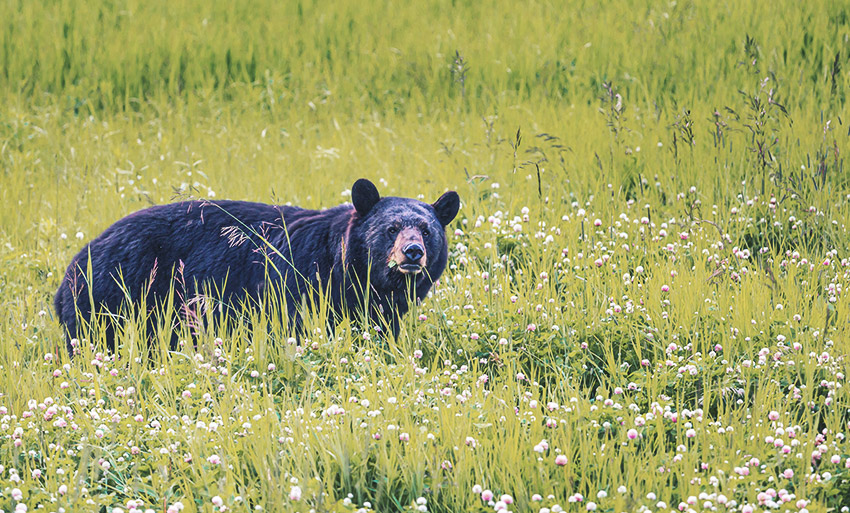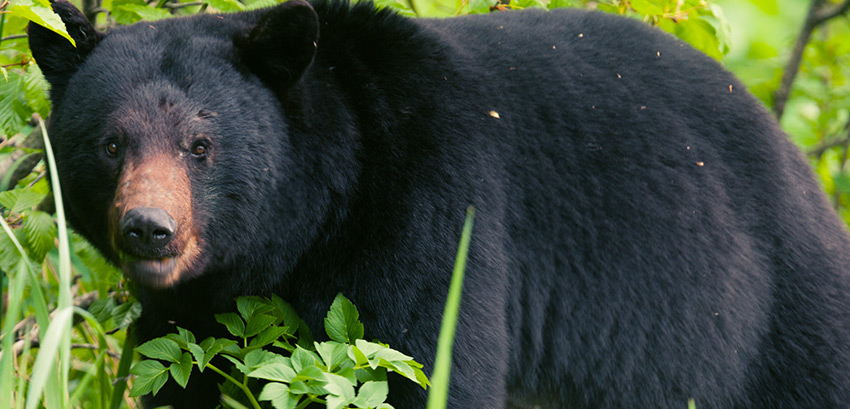How to Survive a Black Bear Attack – According to Science

Black bear attacks are extremely rare, but they do happen on occasion. Understanding the behavior of these bears is key to being safe. In this article you’ll learn how to not only avoid potential encounters, but what to do should you actually get attacked. Also, if you prefer listening to articles like this, I recorded an audio podcast of this, which is linked at the bottom of the article.

Black Bear Biology and Behavior Basics
Let’s start with the basics.
Black bears are found all across much of the forested regions of the United States and Canada. Because of that, many more people have chance encounters with black bears than any other bear species. And, for the most part, they’re only interested in being a bear and eating nuts, berries, and other bear food.

A large male black bear can easily reach 600 pounds, and thus, they’re a formidable threat to humans. In fact, the largest black bear ever reached nearly 1,100 pounds. Females are usually half the size of the males.
But let’s be clear here, there are tens of thousands of black bears across the country and almost no one ever has a problem with them – until there is a problem. So how are black bears different from the brown bears we discussed in the last chapter?
First, black bear mothers will attack defensively, but it’s much less common than grizzly moms. Most of the time they’ll scatter and try to avoid you. Often a black bear mother will climb a tree and then call her cubs to her. This particular call is easy for bear researchers to identify.
However, if a black bear does attack, the chances that it’s a predatory attack are much higher (although still very rare). That means, if they attack, you better fight back. Playing dead just won’t cut it here.
Scenarios to Avoid with Black Bears
- Don’t get near a downed carcass or feeding area.
- Don’t leave food out that can attract a bear.
- Don’t feed any bear – it’ll end up making that bear a problem bear, which in the end will get it killed.
- Stay away from a mother and cubs – which is always sound advice.
- Don’t have food in your tent if you’re camping.

The Most Dangerous Black Bears
While most black bears are harmless, the most problematic bears are:
- Black bears that associate humans with food
- A hungry black bear that somehow sees humans as food
- A mother defending her cubs
How to Survive a Black Bear Attack?
Most encounters with a black bear will end with the bear running away, but let’s walk through a few survival strategies should the situation escalate.
- Stand your ground
- If it doesn’t notice you, slowly retreat.
- Never Run – It can trigger an attack
- Don’t climb a tree – black bears can climb trees really well
- Don’t make eye contact – they may see it as a threat.
- Use bear spray to ward off the attack if it gets close.
- Get loud and aggressive if a black bear approaches. These bears are smart and you don’t want to look like a prey item!
- Don’t play dead with a black bear. If they attack they’re likely attacking because they see you as food – so fight back. Look dominant. That might mean standing on a rock or log. Do anything you can to seem bigger and scarier and less easy to eat.
- Sticks and rocks to the face may be your best bet if you’re in that unfortunate position.
Why I wrote this article
I’ve seen hundreds of bears. Most of those were black bears. On two separate occasions, I sat still as a statue while a bear sniffed the perimeter of my tent and rummaged around the campsite. In Ely Minnesota (home to the North American Bear Center), Haley’s very first field assignment with our team was to film with researchers and walk among more black bears than they could count. Imagine walking through a crowd very slowly, but instead of people… you’re walking past black bears. It was an experience like no other.
Bears are extremely quiet walkers, so there were times when Haley turned to avoid one bear – only to find an 800lb bear was trailing right behind her. They are incredible creatures, and the evening was mostly spent watching bears eat nuts and berries and cubs playing like puppies. At one point, they walked into the forest and gazed up to see that the trees were FULL of bears relaxing in the canopy and hanging from branches. It’s the kind of special sight that makes the hair stand up on the back of your neck – and you’ll never forget that bears climb trees! For the most part, the walk was what I would call a high-intensity calm.
Then, seemingly out of the blue, a male bear started making some heavy breathing noises and charged a member of our team! It was swift and scary, and then the bear changed direction and wandered away. It was a bluff charge, perhaps to show dominance, and it was certainly an adrenaline shot reminder that anything can happen in a moment. And for Haley, I’d say it was a heck of a first day!
Prefer to Listen to these black bear safety tips?
I’ve recored an audio version of this article for you to listen to in an effort to make this more accessible. I hope you enjoy.
The Best Videos on the topic
Here is a decent overview of how to survive a bear attack based loosely on a bunch of the information we collected.
You might also like these:
- Black Bears and Hibernation via my youtube channel.
- Detailed info on the American Black Bear
- How to Survive a Grizzly Bear Attack
- How to Survive a Polar Bear Attack

